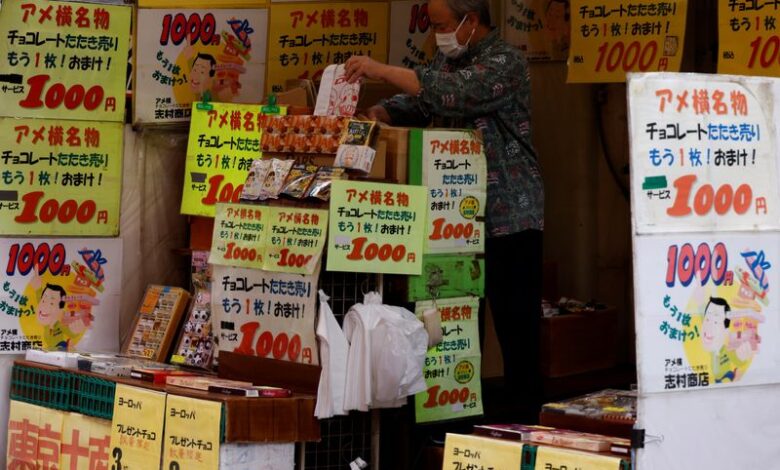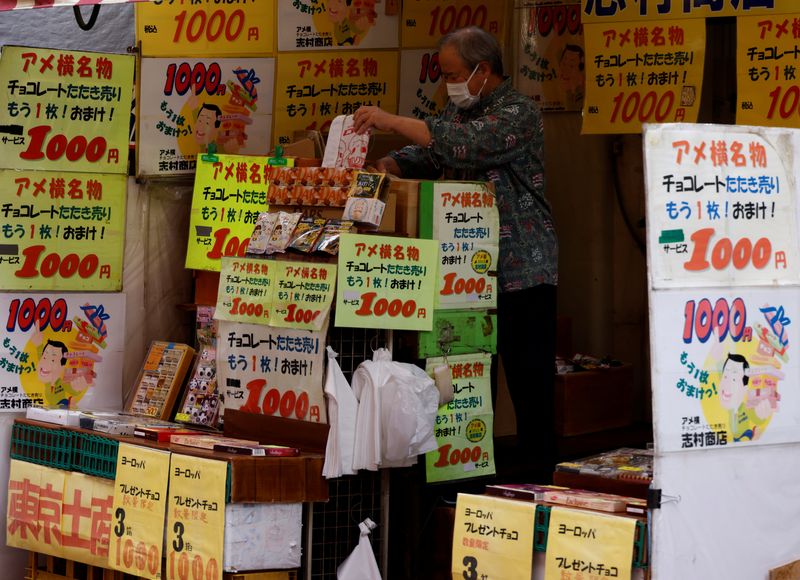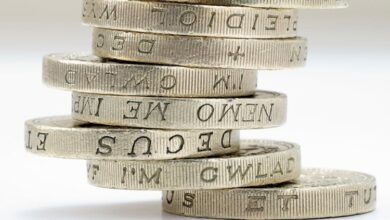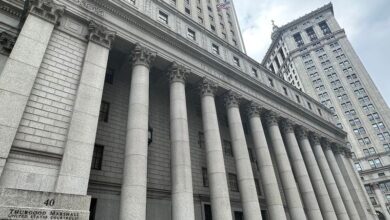Inflation in Japan’s capital slows, missing central bank’s 2% target


© Reuters. A vendor sells chocolates at a shop at the Ameyoko shopping district in Tokyo, Japan, May 20, 2022. REUTERS/Kim Kyung-Hoon/File Photo
By Leika Kihara and Takahiko Wada
TOKYO (Reuters) -Core inflation in Japan’s capital slowed below the central bank’s 2% target to the lowest rate in nearly two years, data showed on Friday, underscoring policymakers’ view that cost pressures will continue to ease in coming months.
Separate data showed corporate service inflation holding steady at a nearly nine-year high in December, suggesting that rising service prices were starting to replace increasing costs as the main driver of price gains.
The data follows the BOJ’s signal on Tuesday that it was becoming more convinced it could durably achieve its 2% inflation target, suggesting an end to negative interest rates was nearing.
The core consumer price index (CPI) in Tokyo, a leading indicator of nationwide inflation trends, rose 1.6% in January from a year earlier, government data showed, slower than a median market forecast for a 1.9% gain.
The Tokyo core inflation rate, which excludes volatile fresh food but includes fuel costs, slowed for a third month to the lowest since March 2022, mostly because of falling energy prices. It followed a 2.1% rise in December.
The so-called “core-core” index that strips away fresh food and fuel prices, closely watched by the BOJ as a gauge of broader price trends, rose 3.1% in January after increasing 3.5% in December, the data also showed.
“A lot of food prices rose last January, which probably helped narrow the year-on-year pace of increase this month,” said Toru Suehiro, chief economist at Daiwa Securities. “Japan might continue to experience a period of dis-inflation.”
Nationwide inflation has exceeded the BOJ’s 2% inflation target for more than a year, leading to expectations the bank will end negative interest rates this year, possibly in March or April.
The BOJ has pledged to keep ultra-loose policy until the recent inflation, driven by rising costs of raw materials and fuel imports, is replaced by price rises caused by robust domestic demand, accompanied by higher wages.
The focus is thus shifting to whether wages will rise enough to underpin consumption and help Japan sustainably achieve the BOJ’s 2% inflation, which it describes as a prerequisite for phasing out its massive monetary stimulus.
Minutes of the BOJ’s December meeting released on Friday showed there was no consensus within the nine-member board on the likely timing and sequence of an exit from ultra-loose monetary policy.
But BOJ policymakers agreed to deepen discussions on the appropriate pace of future interest rate hikes, the minutes showed, a sign they were gearing up for a near-term exit.
“The BOJ shouldn’t miss the opportunity to revise policy by being overly cautious” of ending ultra-loose policy, one member was quoted as saying.



